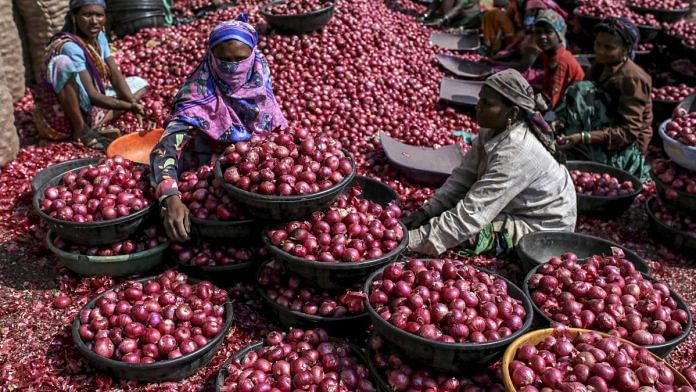Five years of Make in India
Christophe Jaffrelot | Senior Research Fellow, CERI-Science Po, Paris
Vihang Jumle | Associate at Ikigai Law, New Delhi
The Indian Express
The objective of ‘Make in India’ was to increase the manufacturing sector’s growth rate to 12 to 14 per cent per annum “in order to increase this sector’s share in the economy from 16 to 25 per cent of the GDP by 2022,” writes Jaffrelot and Jumle. They argue that five years later, this policy has “produced contrasting results.”
On the question of why Make in India has “failed to deliver”, they write that a large fraction of the Indian FDI is “neither foreign nor direct but comes from Mauritius-based shell companies” and the productivity of Indian factories is low. They also attribute its failure to an infrastructural problem in India. Further, bureaucratic procedures and corruption “continue to make India less attractive for investors.”
Jaffrelot and Jumle write that liberalisation is “not the panacea for all that ails the economy” rather it is a “prerequisite if India intends to follow an export-oriented growth pattern.” A step in the right direction was seen with the reduction of company tax from 35 to 25 per cent last month.
The price of onions: The best thing for the govt would be to do nothing
Naushad Forbes | Co-chairman, Forbes Marshall
Business Standard
The surge of onion prices is part of a larger trend of the supply and demand of onions, writes Forbes, and “in the short-run, the right action by the government is to do nothing.”
According to Ashok Desai’s The Price of Onions (1999), the trend is usually this – a small shortage of supply leads to surge in prices and remains this way until demand catches up. The government should refrain from interfering now, writes Forbes, but in the long-run it should create buffer stocks when prices of onions fall below the cost of producing them. It should also strengthen trade unions and onion mandis “by sharing information on crop yields and expected shortages”, he writes.
This information can be provided by the Confederation of Indian Industry’s Centre of Excellence for Food and Agriculture (FACE). However, if onion supply-chains continue to wane, the government should “not… intervene in pricing but foster greater competition and reduce uncertainty.”
How VD Savarkar and RSS won
Abhinav Prakash Singh | Assistant Professor, SRCC, Delhi University
Hindustan Times
The “rightward shift” in Indian polity has been underway for decades, however its manifestation was seen only after the 2014 elections, argues Singh. He explains that the Hindu right movement has not been “a single unified movement” but an “amalgamation” of three different strands.
The first is the Ratnagiri line of “radical Hindutva” of V.D. Savarkar, which “envisions a modern industrial Hindu nation” and advocates an end to the caste system — “…as the economic transformation of India proceeds, the radical line of Savarkar will become more and more prominent’’ writes Singh.
The second one is the “conservative approach” of the RSS, which “distrusts disruption.” Third is the “social-orthodoxy” which believes in continuing the jati-varna system and “romanticising” the old village life as the “essence” of India.
Singh writes that there is a “consolidation” of the Hindu identity in the new urban class. However, he suggests that the Hindu Right needs a new “intellectual” movement. He calls on the Right to realise that its the “ruling ideology” and the “debate” within the Hindu Right will have “far reaching consequences” for India and the world.
Big Tech, Big Government
Mishi Choudhary | Legal Director of Software Freedom Law Centre, New York
Eben Moglen | Professor of Law and Legal History at Columbia Law School
The Times of India
Choudhary and Moglen write that the government and courts are “beginning their reckoning” with troubles posed by “centralised ‘social media’ and ‘platform’ companies.” They explain that these companies have “acquired a breadth and depth” of “social power” over our “impulses and behaviour patterns” that exceed any similar form of “influence” in human history.
They call out the courts for being “tempted” to demand “immediate, ill-considered solutions” to these problems, adding that “impulsiveness” by courts and regulators will be “self-defeating.” On regulations that require intermediary companies to render messages traceable, they argue that this will “inevitably break the company’s laudable attempts” to protect the “confidentiality of the users’ conversations.”
Further, “treating the problem of social media misuse” as if it were a problem of private defamation ignores the “much larger problems that are caused by” governments and political parties. Choudhary and Moglen suggest that these can be remedied by “strengthening individual rights” and “limiting governmental power”, not the reverse.
Socio-economic factors that go against a hale and hearty India
Vani S. Kulkarni | Sociology teacher, University of Pennsylvania, US
Raghav Gaiha | (Honorary) professorial research fellow, Global Development Institute, University of Manchester, UK
Mint
Kulkarni and Gaiha call for the reorganisation of India’s healthcare system given that the Centre’s health initiatives have so far been uncoordinated and “oblivious of underlying risks”.
Non-communicable diseases or NCDs like cardiovascular diseases, cancer, chronic respiratory diseases and diabetes, are responsible for 42 per cent of deaths in India but the most disadvantaged sections of society are less prone to these.
The India Human Development Survey 2015 found that SCs and STs lead healthier, more active lives while more affluent groups had higher risk of NCD due to “sedentary lifestyles” and the wealthiest are prone to the diseases due to stress, write Kulkarni and Gaiha. Though social support networks help with access to healthcare information, facilities and financial support, the “economic burden of NCDs” is only set to worsen, they write. Prevention and control of NCDs should be a priority for India, which apart from better funding, also requires a reorganisation of healthcare with its sights on “a public healthcare system” with privatisation in specialised fields and services.



